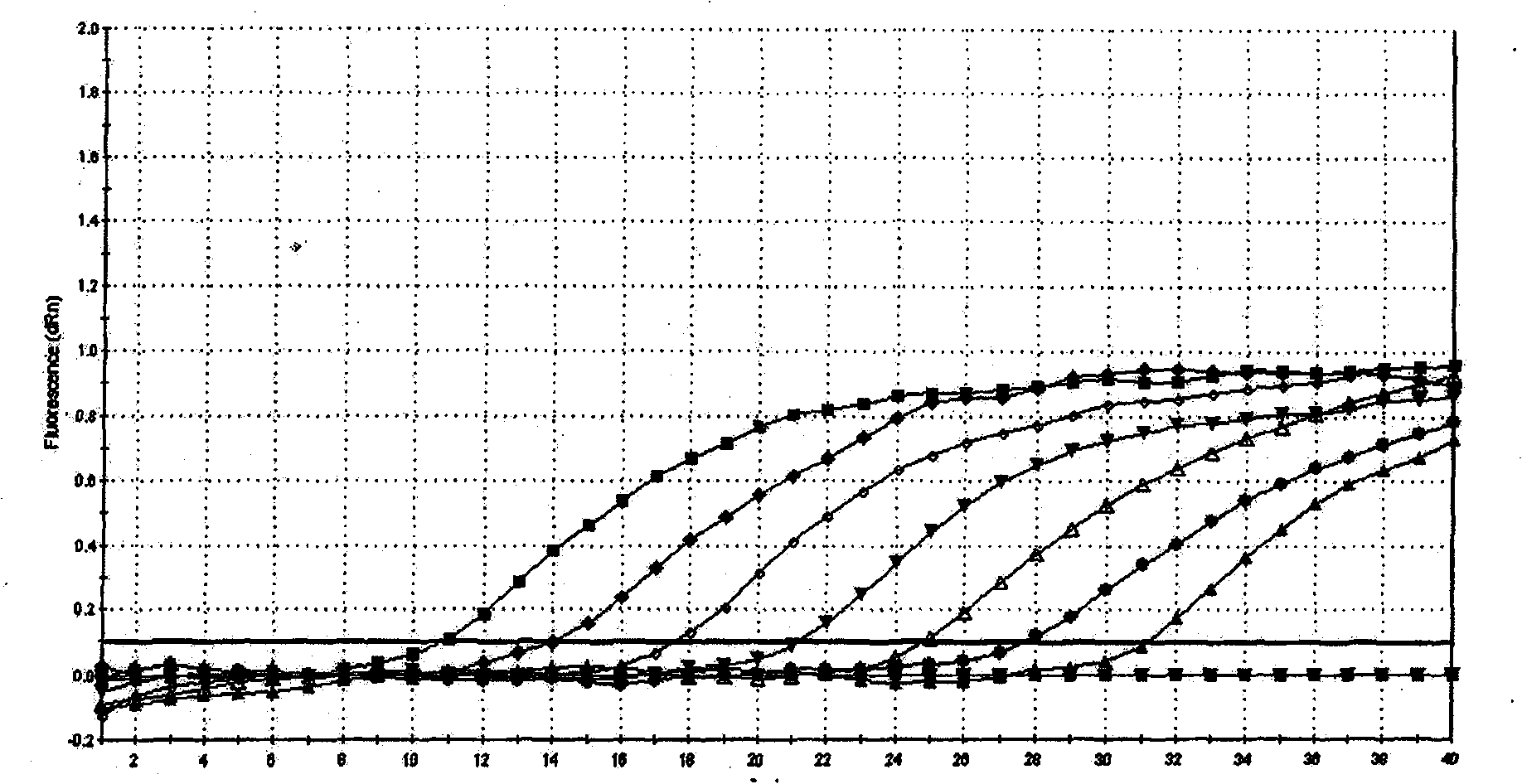Fluorescent quantitative PCR (polymerase chain reaction) reagent kit for detecting Listeria monocytogenes
A technique for monocytosis and Listeria monocytogenes is applied in the field of molecular biology detection kits, which can solve the problems of variant identification, limited identification ability, difficulty, etc.
- Summary
- Abstract
- Description
- Claims
- Application Information
AI Technical Summary
Problems solved by technology
Method used
Image
Examples
Embodiment 1
[0020] Embodiment 1: the preparation of kit of the present invention
[0021] The composition of the fluorescent quantitative PCR kit for detecting Listeria monocytogenes includes:
[0022] Upstream primer H1 5'-gattcccattatgaacgaag-3' (SEQ ID No.1),
[0023] Downstream primer H2 5'-tcagttccttacagatgag-3' (SEQ ID No.2),
[0024] Fluorescent probe P1 5'-FAM-acagccagtactagttcatcgca-TAMRA-3'(SEQ ID No.3)
[0025] Positive quantitative template: pMD18-T recombinant plasmid containing a DNA fragment with the sequence catggcaccaccagcatctataggagcactcgccgccacatcatcgaaaagaaacacgcggatg (SEQ ID No. 4).
[0026] The kit can further include a fluorescent quantitative polymerase and a reference dye.
[0027] Wherein, primers and probes were searched in Genbank for hly genes of various Listeria monocytogenes and analyzed on the basis of their conserved segments, were designed using Bacon Designer 5.0 software, and were synthesized according to conventional methods in the art.
[0028] Th...
Embodiment 2
[0030] Example 2 Detection of Listeria monocytogenes using a kit
[0031] 1. Processing of samples to be tested
[0032] Extract DNA from the sample to be tested. The DNA extraction kit actually used in the examples of this application was purchased from Takara Company.
[0033] 2. Fluorescent quantitative PCR process
[0034] The reaction system (25 μL) is: template DNA 2.0 μL, 10 μM primer 1.0 μL, 3 μM probe 1.0 μL, Premix Ex Taq TM (2×) 12.5 μL of fluorescent quantitative polymerase, 0.5 μL of ROX Reference Dye II (50×) dye, 8 μL of sterile water.
[0035] The reaction program is: 95°C pre-denaturation for 30 seconds, followed by 40 cycles, each cycle program is 95°C for 5 seconds, 60°C for 20 seconds.
[0036] In the examples of this application, the 480 fluorescent quantitative PCR instrument of Roche Company was actually used to record the results.
[0037] 3. Standard curve preparation
[0038] After the quantitative positive template was linearized, it was dilute...
PUM
| Property | Measurement | Unit |
|---|---|---|
| Sensitivity | aaaaa | aaaaa |
Abstract
Description
Claims
Application Information
 Login to View More
Login to View More - R&D
- Intellectual Property
- Life Sciences
- Materials
- Tech Scout
- Unparalleled Data Quality
- Higher Quality Content
- 60% Fewer Hallucinations
Browse by: Latest US Patents, China's latest patents, Technical Efficacy Thesaurus, Application Domain, Technology Topic, Popular Technical Reports.
© 2025 PatSnap. All rights reserved.Legal|Privacy policy|Modern Slavery Act Transparency Statement|Sitemap|About US| Contact US: help@patsnap.com



